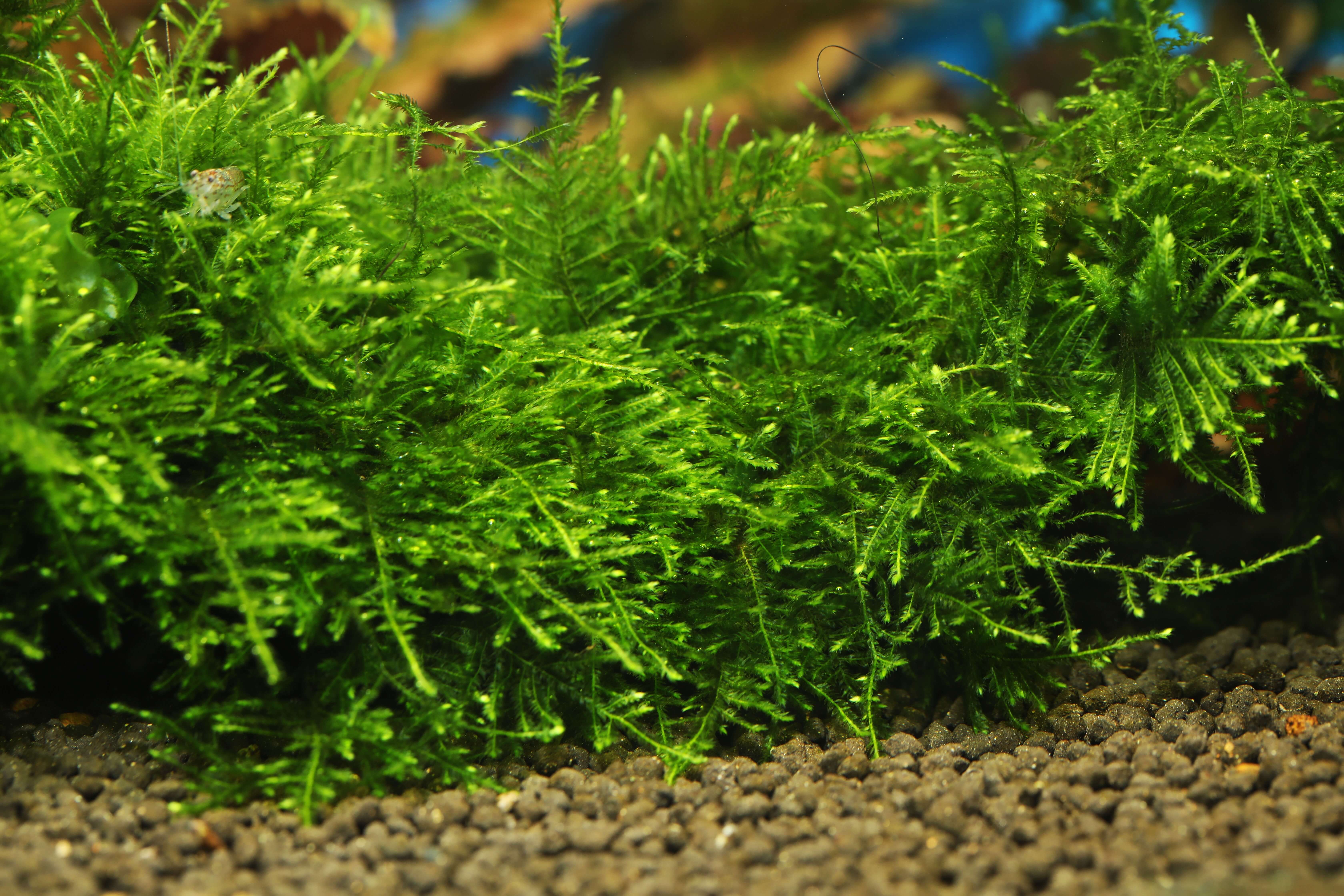Discover the beauty and benefits of Java Moss with this comprehensive guide on how to plant and care for this versatile aquatic plant.
Understanding Java Moss: An Introduction to the Aquatic Plant

Java Moss, also known as Taxiphyllum barbieri, is a popular aquatic plant among aquarium enthusiasts. It is a small and delicate moss that can easily be attached to rocks, driftwood, or other surfaces in your aquarium. Java Moss is native to Southeast Asia and is commonly found in rivers, streams, and lakes.
One of the reasons why Java Moss is so popular is because of its ability to create a natural and lush environment in your aquarium. It can provide hiding places and breeding grounds for fish and other aquatic creatures. Additionally, Java Moss helps to improve water quality by absorbing excess nutrients and reducing algae growth.
Java Moss is relatively easy to care for and is suitable for both beginners and experienced hobbyists. It requires low to moderate lighting and prefers water temperatures between 70-75°F. Regular pruning and maintenance are necessary to keep it looking healthy and prevent overgrowth.
In summary, Java Moss is a versatile and beneficial aquatic plant that can enhance the beauty of your aquarium while providing numerous benefits to the aquatic ecosystem. Whether you're a beginner or an experienced aquarist, adding Java Moss to your tank is a great choice.
The Benefits of Having Java Moss in Your Aquarium
Having Java Moss in your aquarium offers several benefits for both the fish and the overall ecosystem. Here are some of the key advantages:
1. Natural Habitat: Java Moss creates a natural and comfortable environment for fish and other aquatic creatures. It provides hiding places, breeding grounds, and shelter from predators.
2. Water Filtration: Java Moss helps to improve water quality by absorbing excess nutrients, such as nitrates and phosphates, which can lead to algae growth. It acts as a natural filter and helps to maintain a healthy ecosystem in your aquarium.
3. Oxygenation: The dense growth of Java Moss promotes oxygenation in the water, which is essential for the well-being of fish and other aquatic organisms.
4. Aesthetics: Java Moss adds a beautiful and lush green color to your aquarium, creating a visually appealing aquascape. It can be used to create natural landscapes, cover unsightly equipment, or enhance the appearance of rocks and driftwood.
Overall, having Java Moss in your aquarium not only enhances its visual appeal but also contributes to the overall health and well-being of the aquatic ecosystem.
Planting Java Moss: Step-by-Step Guide for Beginners
Planting Java Moss in your aquarium is a relatively simple process, especially for beginners. Follow these step-by-step instructions to ensure successful planting:
1. Prepare the Surface: Clean the surface where you want to attach the Java Moss. It can be rocks, driftwood, or other decorations in your aquarium. Make sure the surface is free from algae and debris.
2. Attach the Moss: Take a small clump of Java Moss and attach it to the desired surface. You can use fishing line, cotton thread, or plant weights to secure the moss in place. Be gentle to avoid damaging the delicate moss.
3. Provide Optimal Conditions: Ensure that your aquarium provides the right conditions for Java Moss to thrive. This includes low to moderate lighting, water temperatures between 70-75°F, and regular fertilization if necessary.
4. Regular Maintenance: Trim and prune the Java Moss regularly to prevent overgrowth and maintain its shape. Remove any dead or decaying parts to keep the plant healthy.
By following these simple steps, you can successfully plant Java Moss in your aquarium and enjoy its beauty and benefits.
Caring for Java Moss: Essential Tips and Maintenance
Caring for Java Moss is relatively easy, but it requires some essential tips and regular maintenance to ensure its health and longevity. Here are some important care tips:
1. Lighting: Java Moss thrives in low to moderate lighting conditions. Avoid exposing it to intense sunlight or strong artificial lighting, as it can cause the moss to turn brown or die.
2. Water Parameters: Java Moss prefers slightly acidic to neutral water with a pH level between 6.0 and 7.5. It also requires good water circulation and oxygenation. Regular water testing and maintenance are important to ensure optimal conditions for the moss.
3. Pruning: Trim and prune the Java Moss regularly to prevent overgrowth and maintain its shape. Use clean scissors or tweezers to carefully remove any dead or decaying parts. This will help to keep the plant healthy and prevent it from taking over your aquarium.
4. Algae Control: Although Java Moss can help to reduce algae growth in your aquarium, it is not completely immune to algae itself. Monitor the moss for any signs of algae and remove it promptly to prevent it from spreading.
By following these essential care tips and regularly maintaining your Java Moss, you can ensure its health and enjoy its beauty in your aquarium for a long time.
Creative Uses for Java Moss in Aquascaping
Java Moss is not only a versatile and beneficial plant for your aquarium, but it can also be used creatively in aquascaping. Here are some creative uses for Java Moss:
1. Carpeting Plant: Java Moss can be used to create a lush and natural carpeting effect in your aquarium. Attach it to the substrate or use a mesh to hold it down. With time, the moss will spread and cover the entire bottom of your tank, creating a beautiful carpet of green.
2. Moss Walls: Create stunning moss walls by attaching Java Moss to a mesh or grid and placing it vertically in your aquarium. This creates a visually appealing backdrop and provides additional hiding places for fish and other aquatic creatures.
3. Driftwood and Rock Attachments: Attach Java Moss to driftwood or rocks in your aquarium to create natural-looking landscapes. The moss will grow over time, giving the impression of a moss-covered forest or rocky outcrop.
4. Aquatic Sculptures: Use Java Moss to create artistic and unique aquatic sculptures in your aquarium. Shape the moss into different forms, such as animals, trees, or abstract shapes, and attach it to a base or structure.
With its versatility and ability to adapt to various forms, Java Moss offers endless possibilities for creative aquascaping. Let your imagination run wild and explore the different ways you can incorporate Java Moss into your aquarium.




Leave a Comment